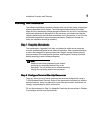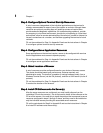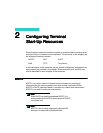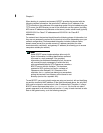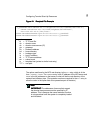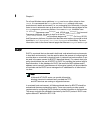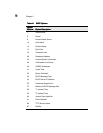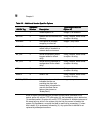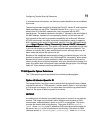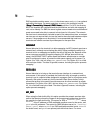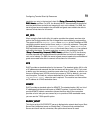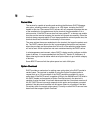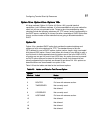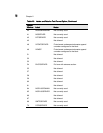Configuring Terminal Start-Up Resources
11
1111
11
Option 48 assumes TCP and port 7100 for font server access. If other ports are to
be used, you must use the vendor-specific option described below. Also, option 49
assumes Query mode. If Direct is wanted, use the vendor-specific option.
The terminal uses options 66 and 67 to determine where to obtain the operating
system for the network-booted terminal, with option 66 being the server name (as
an IP address), and option 67 being the full pathname to the file (such as
/tftpboot/vmlinux)
. Option 17 is the IP address and path name to the root
directory (similar to the
T17
entry for BOOTP) and is of the form
IPADDR:/pathname
.
Option 18 (extensions path) operates as follows: If the extensions path option is
given, it is treated as a
<machine>+<directory-path>
pair, with a colon
separating the two. Directory separators are UNIX separators. Typically, this would
be of the form:
132.237.20.164:/tftpboot/extension.opt
, where the
suffix is anything but
.txt
to behave consistent with RFC 2132. If the suffix is
.txt
(case is ignored), the file is treated as a text list of options in the form
option=value
.
Although this violates the RFC, text files are much easier to manipulate using an
editor than is a DHCP option space. The IP address and pathname used above are
only for example. Table 2-2 lists all T1500-specific options not listed in Table 2-1.
Note that binary options can not be passed (as binary) in the text mode associated
with this option.
If the DHCP server is capable of returning values for option 43 based upon either
vendor or client ID (or some other tag), the current software release will utilize this
data. The format of this option is an encapsulated format, consistent with RFC
2132. Identical options are available here, through the extensions path and through
options 128+ (discussed below), although option 43 predefines the "option"
numbers, while the others do not (unless option 43 is passed in the extensions path
file).
Additional vendor-specific options are available to disable swapping and to provide
a network services directory. These options are listed in Table 2-2 and sit in option
space 128-254. Setup provides the ability to modify the set of options sent by the
terminal to the server at DHCP negotiation time. By default, none of options
128-254 are requested. All vendor-specific options in the 128-254 option space are
strings of the form
0080_TAG=DATA
, where
TAG
and
DATA
are illustrated in
Table 2-2. It is recommended that, where possible, options 43 and 18 be used
rather than the 128-254 option space.



